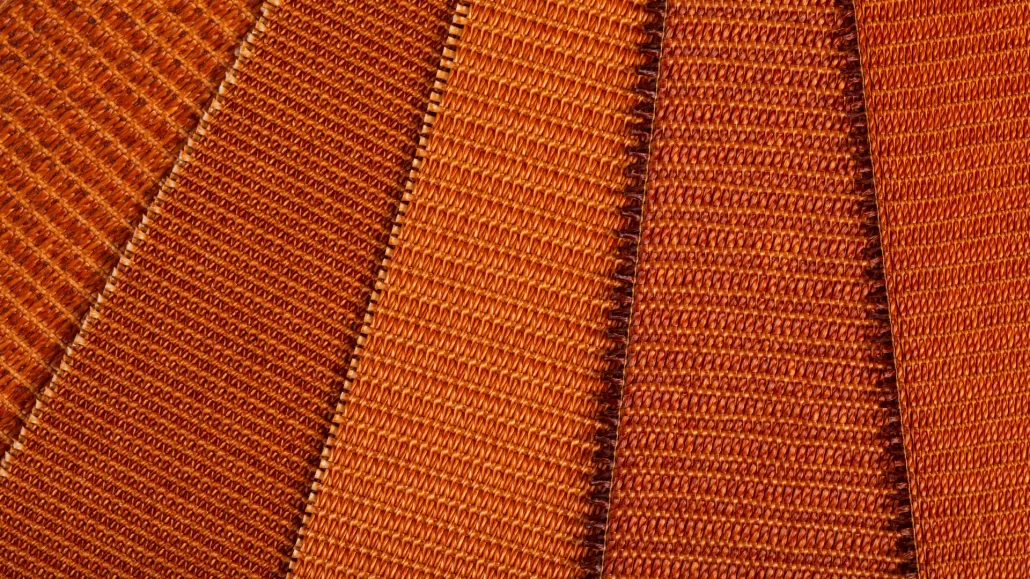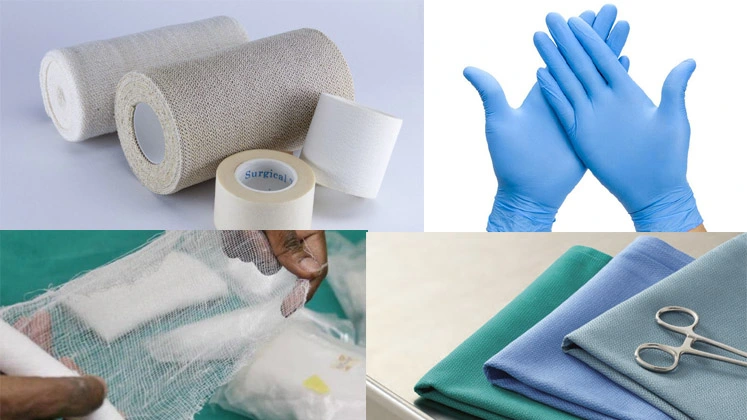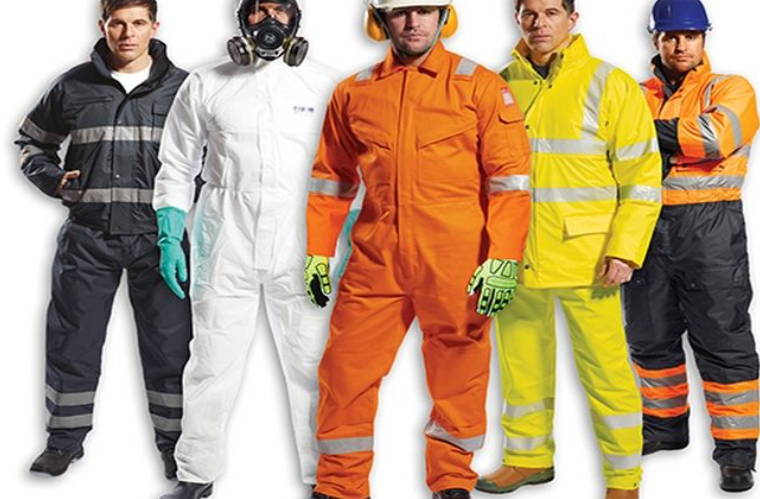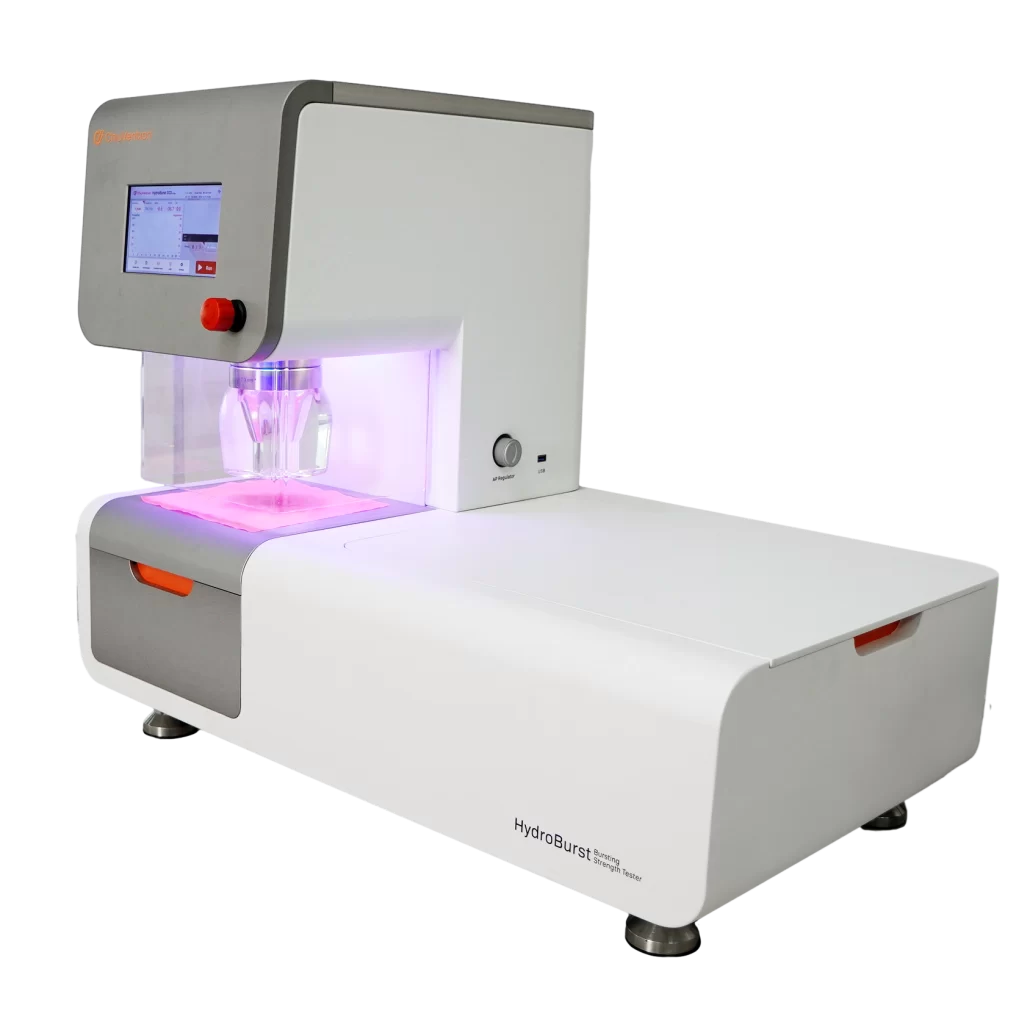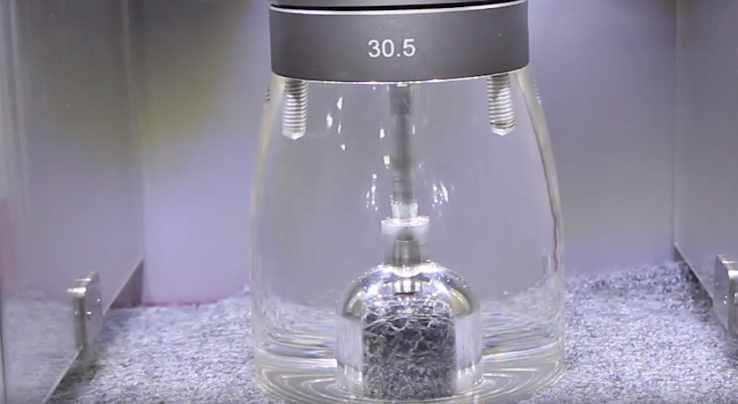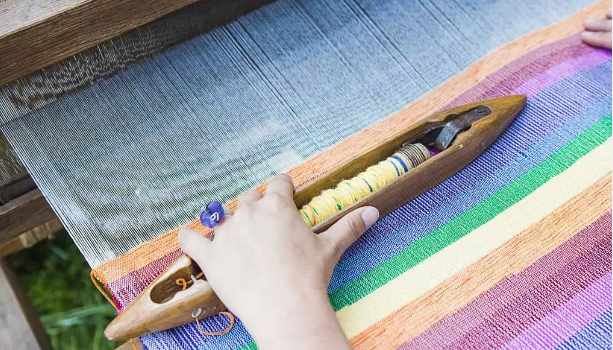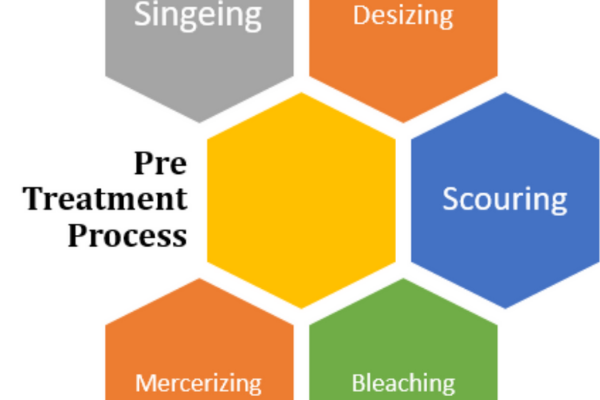What is the Bursting Strength of A Fabric?
The burst strength of fabric refers to the ability of a fabric to resist bursting or rupture when subjected to pressure or force. It is a measure of the fabric’s resistance to damage caused by sudden and intense localized pressure. Burst strength is an important quality parameter for fabrics used in various applications, such as home textiles (curtains, pillows, duvet covers), clothing (gloves, socks, elbows and knees of clothes), and technical textiles (geotextiles, umbrellas, etc.)
What is the Fabric Bursting Strength Test?
The burst strength of the fabric is typically determined through a standardized test method called the “bursting strength test.” During this test, a defined pressure is applied to a fabric specimen until it bursts. The bursting strength is then recorded as the maximum pressure that the fabric can withstand before bursting. Of course, in the professional testing process, there are a variety of testing methods, such as fixed-speed bursting, fixed-pressure bursting, fixed-time bursting, etc., to comprehensively assess the resistance of textiles to burst from different perspectives.
Higher burst strength indicates that the fabric has better resistance to bursting and is more durable in applications where it is subjected to pressure or impact. Fabric Manufacturers use burst strength testing to ensure the quality and performance of their fabrics meet industry standards and customer expectations. In this article, we will share A Complete Guide to the Fabric Bursting Strength Test (with a test standard of ASTM D3786)
What Textiles are Commonly in Need for Bursting Strength Test?
Ballistic Fibers: Ballistic fibers are special textiles with high strength and impact resistance, and are commonly used to make bulletproof vests, ballistic helmets, and other protective gear. Since the primary function of ballistic fibers is to withstand impact and effectively reduce damage, testing their bursting strength is critical. Expansion testing can help assess the tensile and rupture resistance of ballistic fibers when subjected to strong impacts, ensuring that they can effectively protect the wearer.
Engineered Textiles: Engineered textiles such as wire rope and engineered fabrics are commonly used in construction and civil engineering. These textiles are subjected to various forms of stress and pressure during use, so bursting tests can help determine their strength and durability under extreme conditions. Through bursting tests, the load-bearing capacity and safety of engineered textiles can be assessed to ensure that they comply with relevant standards and requirements.
Medical textiles: Medical textiles such as surgical gowns and bandages play an important role in the medical field. These textiles need to have a certain level of strength and durability to ensure that they are effective in medical operations. Expansion testing evaluates the tensile and rupture resistance of medical textiles to ensure that they do not crack or break during use, ensuring the safety and comfort of patients.
Protective clothing: Protective clothing, such as fire-resistant clothing and chemical-resistant clothing, is often used in hazardous environments and needs to have good tensile and breakage resistance. Burst testing can help assess how protective clothing performs under external pressure and ensure that it protects the wearer from injury. Expansion testing of protective clothing is an important means of ensuring its quality and safety.
Technical textiles: Technical textiles such as aerospace materials and marine materials often require high strength and durability to cope with extreme environments and conditions. Expansion testing allows technical textiles to be assessed for their rupture resistance and load-bearing capacity, ensuring that they can operate and perform stably in special environments. Expansion testing is essential for the development and production of technical textiles and provides key support and assurance for the industry.
Industrial Filter Fabrics: Industrial filter fabrics are commonly used in industrial filters, air purification equipment, and other fields, and need to have a certain degree of strength and durability. Expansion testing evaluates the performance of industrial filter fabrics when subjected to pressure and stress, ensuring that they can effectively filter out impurities and particles, and safeguard the effectiveness of industrial production and environmental purification.
The 2 Most Commonly Used Methods for Fabric Bursting Strength Test
They are the hydraulic and pneumatic methods. The hydraulic method has a wider range of applications and is capable of doing greater strength bursting tests.
The testing principle of the hydraulic method
A specimen of a certain area is clamped to an extendable diaphragm and liquid pressure is applied under the diaphragm. Then increase the volume of liquid at a constant rate, so that the diaphragm and the specimen expand, until the specimen ruptures, measured bursting strength and bursting expansion degree.
The commonly used hydraulic bursting strength testers are MullenC type and Mullen A type of hydraulic bursting strength tester, both of which utilize the liquid pressure of glycerin to produce a top-up effect through the elastic membrane to complete the test.
Commonly related test standard methods are:
American Standard ASTM D3786, whose unit is psi;.
European standard ISO 13938-1, China national standard GB/T 7742.1, the unit is kPa.
The Test Principle of The Pneumatic Method
The specimen is clamped on an extendable diaphragm and gas pressure is applied underneath the diaphragm. Then, the volume of gas is increased at a constant rate, causing the diaphragm and the specimen to expand until the specimen ruptures and the bursting strength and expansion degree are measured.
The commonly related test methods are:
American Standard ASTMD 3786 in psi.
European Standard ISO 13938-2, China National Standard GB/T 7742.2, the unit is kPa.
One Test Standard of Fabric Bursting Strength Test – ASTM D3786 Bursting Strength (Diaphragm Method)
Scope
1.1 This test method describes the use of a hydraulic diaphragm fabric burst tester to measure the bursting resistance of textiles. This burst strength test method is generally applicable to a wide range of textile products.
1.2 This test method can also be used for stretch fabrics and industrial woven fabrics such as inflatable restraints.
1.3 Values expressed in S.I. units shall be considered as standard.
1.4 This Standard is not intended to address all safety issues associated with the use of this Standard. It is the responsibility of the user of this Standard to establish appropriate safety and health measures and to determine their scope of application.
Referenced Documents
2.1 ASTM Standards:
D 123 Terminology Relating to Textiles
D 5034 Test Methods for Breaking Load and Elongation of
Textile Fabrics
D 1776 Practice for Conditioning Textiles for Testing
D 3787 Test Method for Bursting Strength of Knitted
Textiles—Constant-Rate-of-Traverse (CRT) Ball Burst
Test
2.2 Other Standard:
TAPPI T 403, OM.91 Bursting Strength of Paper3
Terminology
Definition:
Burst strength, n – the expansion force applied at right angles to the plane of the fabric under specific conditions, which will cause the fabric to rupture.
Knitted fabrics, n – structures generated through interweaving one or more ends of yarn or similar materials.
Non-woven fabrics, n – composed of the combination or interlocking of fibers, or both, through Mechanical, chemical, thermal, or solvent methods and combinations among them.
Discussion – This term does not include papers or Woven, knitted, or tufted fabrics.
Woven fabrics, n – at least when two strands of thread intertwined together, usually forming a right angle to each other. Another is based on the predetermined interweaving pattern and Makes at least one group parallel along the longitudinal direction of the fabric.
Elastic woven fabric, n – is capable of stretching at least 20% in warp or weft yarns under the loads and conditions encountered in direction or both almost complete recovery during use and removal of load.
Summary of Test Methods
4.1 Sample is clamped on the expandable diaphragm. The diaphragm expands to the point of rupture of the specimen under fluid pressure. The difference between the total pressure required to rupture the specimen and the pressure required to expand the diaphragm is reported as the burst strength.
Significance and Application
5.1 This fabric burst strength method is used to determine the burst strength of knitted fabrics, non-woven fabrics, and woven fabrics, and can be applied to the textile industry to evaluate the differences in strength of different end-use fabrics.
5.2 If the burst test results by using ASTM D3786 are inconsistent with the actual performance. Due to the widespread use of ASTM D3786 as an acceptable test for trade, it can be used as a compliant test for textile bursting strength in commercial shipping. If there is a dispute between the buyer and the seller due to the use of ASTM D3786 to obtain different test results, the buyer and seller’s laboratories should conduct comparative testing on random samples of the same type to conduct systematic statistics to identify deviations.
Instruments and Materials
6.1 Hydraulic Diaphragm Bursting Strength Tester – A testing machine that meets the requirements of 6.1.1-6.1.4. In case of dispute, the motor-driven burst testers should be used unless otherwise agreed upon by the purchaser and supplier.
6.1.1 The fixture shall firmly and uniformly fix the specimen between two circular, flat, parallel, and preferably stainless steel surfaces, and shall not slide during the testing process. Use sufficient pressure to effectively reduce sliding.
6.1.1.1 The surface of the upper and lower fixtures must have a circular opening with a diameter of at least 75 millimeters (3 inches) and a coaxial hole with a diameter of 31 ± 0.75 millimeters (1.22 ± 0.03 inches): The surface of the fixture where the specimen is placed must have concentric grooves with a spacing of not less than 0.8 millimeters (1/32 inches), and the material of the grooves must be wear-resistant, with a depth not less than 0.015 millimeters (0.0006 inches) from the edge of the hole.
The surface of the clamp must be metal, and any edges that may cause cutting action must be rounded with a radius not exceeding 0.4 millimeters (1/64 inches). The lower clamp should be integrated with the cavity, and the screw in the cavity should apply liquid pressure medium to the rubber diaphragm at a uniform rate of 95 ± 5 milliliters per minute.
NOTE —Since the clamping mechanism and clamping surfaces are subject to considerable wear and distortion, they should be examined periodically and repaired or replaced when necessary. The effectiveness of grooving the clamping surfaces in the manner specified has not been determined.
6.1.2 Diaphragm 4A 48 mm (1.875 in.) molded synthetic rubber diaphragm, 1.80 ± 0.05 mm (0.070 ± 0.002 in.) in thickness with reinforced centers, is sandwiched between the lower cleat and the rest of the device so that the center of the upper surface of the diaphragm is located below the plane of the clamped surfaces before the diaphragm is stretched by the pressure release. The pressure required to lift the free surface of the diaphragm plane shall be 30 ± 5 kPa (4.3 ± 0.8 psi).
This pressure should be checked at least monthly. For testing purposes, a bridging gauge may be used to test with the clamping ring removed. The diaphragm should be checked frequently for permanent deformation and replaced as necessary.
6.1.3 Pressure Gauges – Maximum reading pressure gauges of the Borden type, with appropriate capacity in pounds, are accurate to within 1% of their maximum capacity over their entire scale range. The capacity of the gauge shall be such that individual readings are not less than 25 percent nor more than 75 percent of the total capacity of the gauge.
6.1.4 Hydraulic system
Apply controlled and continuously increasing hydrostatic pressure to the bottom of the diaphragm until the specimen ruptures through fluid flowing out at a speed of 95 ± 5 mL/min. The fluid is displaced by a piston in the pressure chamber of the apparatus. The recommended chamber fluid is USP chemically pure 96% glycerin. Fluid flows through the piston in the instrument pressure chamber.
The installation of hydraulic systems (including clearances) should avoid external vibrations. At the moment of sample rupture, there must be a way to stop applying any further loading pressure and keep the material inside the pressure chamber unchanged until the total burst pressure and the pressure required to inflate the diaphragm reach a certain value. A device must be provided to stop applying any further loading pressure at the moment of specimen rupture and maintain the volume of the pressure chamber unchanged until the total burst pressure displayed on the pressure gauge and the pressure required for diaphragm inflation are recorded.
Note: Ethylene glycol may be substituted for glycerine if desired.
6.1.5 Aluminum foil for calibrating the tester – Used to check the overall performance of the tester, pieces of pretested aluminum sheets with known burst strength within the range of 70 to 790 kPa (10 to 115 psi).
Sampling
7.1 Batch Samples – As acceptance testing batch samples, randomly select the applicable material specifications or the number of fabric rolls specified in other agreements between the purchaser and supplier. Consider the cloth roll as the main sampling unit.
Note – Appropriate specifications or other agreements between the purchaser and supplier require consideration of differences between fabric rolls and between samples taken from fabric rolls, to provide a meaningful sampling plan that includes producer risk, consumer risk, acceptable quality level, and limiting quality level.
7.2 Laboratory Samples – As laboratory samples for acceptance testing, take a 1 meter (1 yard) long full-width color board from the end of each roll of fabric in the batch samples and first discard at least 1 meter (1 yard) of fabric from the outermost side of the fabric roll. Cut at least 305 millimeters (1 foot) wide straps from each roll or piece of circular knitted fabric selected from batch samples.
7.3 Test Samples – Cut ten test samples from each color sample in the laboratory, with each sample measuring 125 millimeters (5 inches) square.
How Do You Calculate the Fabric Bursting Strength?
You should have a glance at the test process before getting this answer.
①Pre-test: Before the test, clamp the 2 additional specimens prepared according to the regulations, and then start the instrument for pre-test to observe whether the strength of the fabric to the point of rupture is completed within the specified time limit. If not, adjust the pressurization rate according to the conditions of the apparatus so that the average bursting time is within the specified range. (30±10)s for general fabrics and (15±10)s for woolen fabrics.
②Start test: Based on the pre-test, test the specimens one by one with the adjusted pressurization rate and record the bursting strength and expansion of the specimens. If the specimen breaks at the edge of the fixture ring, another specimen should be taken and redone.
③Test the diaphragm correction factor: with the same pressure rate as the above test, in the absence of specimens, clamp the diaphragm with the fixture, so that the diaphragm expansion of the above specimens reaches the average expansion degree of expansion of the pressure required, is the diaphragm correction factor.
Calculation of Results
Expansion strength is calculated according to the following formula:
A=B-C
A – the average expansion strength of the diaphragm top broken specimen, kN/m².
B – Measured fabric breaking strength, kN/m².
C – Diaphragm correction factor, kN/m².
For some advanced burst strength testers, you do not need to calculate the breaking strength of fabric manually because all of the related data (including the final test results) are displayed on the LCD screen. Besides, you can share the test results with your smartphone, such as the HydroBurst Bursting Strength Tester of ChiuVention Company.
Factors Affecting Fabric Bursting Strength
The Factors from Fabric
Yarn bursting strength and breaking elongation
When the bursting strength of the yarn in the fabric is large, the elongation is large, with higher bending resistance, and not easy to bend and break, then the fabric will have a better performance in bursting strength.
Fabric thickness
If other conditions are the same, the thicker the fabric, the greater the burst strength.
Fabric warp and weft density
When other conditions are the same, the greater the warp and weft density of the fabric, the greater the bursting strength.
If the fabric warp and weft density are different, the fabric will tear along the direction where the density is small, and the fabric burst strength is low, the cleft is linear. When the warp and weft density is similar, the warp and weft of the yarn share the load at the same time, and the fabric tears along the warp and weft of the two directions at the same time cracking, cracks show L-shaped.
Hooking strength of yarns
In knitted fabrics, the greater the crochet strength of yarn loops is, the greater the burst strength of the fabric is.
Moreover, yarn fineness and loop density also affect the burst strength of knitted fabrics. Increasing the yarn density and loop density can improve the fabric burst strength.
Influence of treatment process
Fabric treatment such as boiling and bleaching, brushing, dyeing, enzyme washing, and resin qualitative finishing will affect the fabric burst strength. Under the influence of these different processes, the bursting strength of fabrics decreases, and the degree of decrease is not the same with different processes and materials. Generally speaking, the burst strength of fabrics with dark color is lower than that of fabrics with light color.
The factors From the Test Operation
Influence of the test method used
In the test where the bursting strength is less than 80KPA, the pneumatic method and hydraulic method are not much different, but if the bursting strength is more than 80KPA, the general use of the hydraulic method will be more stable. Using the same test method, the test range is not the same, the test results will also have deviation. Generally speaking, the test results will be more accurate if a smaller range is used. Therefore, if you can use a small range, just use it.
Influence of the operator
Especially in the case of pneumatic fabric testers, if the wrong standard method is chosen, or the wrong test cup is chosen, or the calibration is wrong, the test results will also be greatly affected. Secondly, there is the influence of irregularities in the tester’s operation. Especially in the traditional hydraulic bursting strength machine testing process, if the tester can not move the valve handle back to the original position at the moment that the fabric is broken, the bursting strength will be larger. (therefore we recommend you buy a fully automatic fabric bursting strength instrument, such as HydroBurst).
Influence of the tester’s sample. Each sample should not only be representative but also be taken within the specified range. If the tester takes the sample at the edge of the fabric or at a place where it has been stretched, the bursting strength will usually be low.
In many tests, we found that the test area, test conditions, and burst tester also affect the fabric bursting strength.
Generally speaking, the smaller the test area is, the larger the burst strength value is. The burst strength value obtained by using a test area of 7.3cm2 is about 3 times the value of the burst strength obtained by using a test area of 50cm2. Therefore, it is necessary to specify the test area for the bursting test; the bursting strength value obtained by using a constant oil pressure rate of 95mL/min is larger than that obtained by using a constant bursting time of 20s; the bursting strength value obtained by different equipment varies under the same test conditions is also different. So it is necessary to label the test environments and test conditions in the test report.


